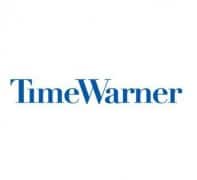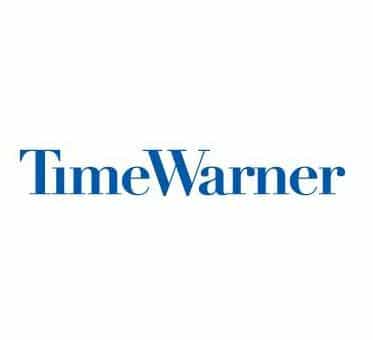 Revenues increased 3% to $6.8 billion in the Q2 due to growth at Home Box Office and Turner. Adjusted Operating Income grew 17% to $1.6 billion due to increases at Turner, Home Box Office and Warner Bros. Operating Income increased 13% to $1.6 billion. Adjusted Operating Income and Operating Income margins were 24% and 23% in Q2, respectively, compared to 21% for each in the prior year quarter.
Revenues increased 3% to $6.8 billion in the Q2 due to growth at Home Box Office and Turner. Adjusted Operating Income grew 17% to $1.6 billion due to increases at Turner, Home Box Office and Warner Bros. Operating Income increased 13% to $1.6 billion. Adjusted Operating Income and Operating Income margins were 24% and 23% in Q2, respectively, compared to 21% for each in the prior year quarter.
In the quarter, Time Warner posted adjusted EPS of $0.98 versus $0.76 for the year-ago quarter—an increase of 29%. Diluted Income per Common Share from Continuing Operations was $0.94 for the quarter, compared to $0.73 for last year’s Q2.
In the quarter, Time Warner completed the spin-off of Time Inc. on 6/6.
The board also authorized an additional $5 billion of share repurchases. Time Warner repurchased 51 million shares for $3.5 billion YTD through 8/1.
Said Chairman and CEO Jeff Bewkes: “We had another strong quarter, reflecting the strength of our businesses and our potential for continued growth as we deliver on our strategic plan to be the world’s leading video content company. Adjusted Operating Income increased 17%, while Adjusted EPS rose 29%, and over the first half of the year we generated $2 billion of Free Cash Flow, up 16% year-over-year. We achieved these results in a milestone quarter during which we spun off Time Inc. as an independent, publicly-traded company, further unlocking value for our shareholders and giving Time Warner even more operational focus. Our commitment to invest in great storytelling was evident across the Company. With hits like Game of Thrones, True Detective and Silicon Valley, HBO once again led the industry with 99 Primetime Emmy nominations, more than double its nearest competitor for the second straight year and the most nominations for the fourteenth year in a row. At Turner, TNT debuted the two most-watched new series on ad-supported cable this year with The Last Ship and Murder in the First and ranked as ad-supported cable’s #1 primetime network among total viewers and adults 18-34, 18-49 and 25-54 in the second quarter. Turner’s other networks also continued to lead the industry, and in the second quarter TBS finished as the #3 ad-supported cable network in primetime among adults 18-49 and Adult Swim ended as ad-supported cable’s #1 network in total day among adults 18-34 and 18-49. Heading into the 2014-2015 television season, Warner Bros. is the #1 producer of shows for broadcast networks for the 11th time in the past 12 seasons. Starting this fall, Warner Bros. will have 31 shows on broadcast networks, including at least two primetime series on each network, and 60 shows across broadcast and cable. And in film, Warner Bros. benefited in the quarter from the home video releases of the second Hobbit installment and The LEGO Movie, which, in addition to being one of the year’s biggest box office hits, has also become
a franchise property for the studio. Further demonstrating our commitment to shareholder returns, so far this year we’ve returned over $4 billion to our shareholders in the form of share buybacks and dividends, and our board in June approved an additional $5 billion of share repurchases.”
For 1H, Cash Provided by Operations from Continuing Operations reached $2.1 billion and Free Cash Flow totaled $2.0 billion. As of June 30, 2014, Net Debt was $18.1 billion, down from $18.3 billion at the end of 2013, due to the generation of Free Cash Flow, cash received from Time Inc. in connection with the spin-off and proceeds from the sale of the Company’s space in Time Warner Center, offset in part by cash used for share repurchases and dividends.
From January 1, 2014 through August 1, 2014, the Company repurchased approximately 51 million shares of common stock for approximately $3.5 billion. These amounts reflect the purchase of 32 million shares of common stock for $2.3 billion since the amounts reported in the company’s Q1 earnings release.
In June 2014, the board authorized an additional $5 billion of share repurchases. At August 1, 2014, $6.5 billion remained available for repurchases.
TURNER
Revenues rose 5% ($123 million) to $2.8 billion, mainly due to growth of 8% ($99 million) in Subscription revenues and 1% ($13 million) in Advertising revenues. The increase in Subscription revenues was primarily due to higher domestic rates and international growth, partially offset by the negative effect of foreign currency exchange rates. Advertising revenues increased due to growth at Turner’s domestic and international networks, partially offset by the negative effect of foreign currency exchange rates. Domestic advertising revenues benefited from the airing of two 2014 NCAA Division I Men’s Basketball Championship tournament (the “NCAA Tournament”) semifinal games and higher pricing, partially offset by lower audience delivery and demand.
Adjusted Operating Income increased 15% ($125 million) to $940 million due to higher revenues. Expenses were flat in the quarter as higher programming costs were offset by lower marketing expenses and the reversal of an accrued contingency. Programming costs grew 5% primarily due to higher costs related to the NCAA Tournament.
Operating Income increased 14% ($114 million) to $929 million.
TNT ranked as ad-supported cable’s #1 primetime network among total viewers and adults 18-34, 18-49 and 25-54 in the second quarter and The Last Ship and Murder in the First are the two most-watched new series on ad-supported cable year-to-date. TBS was the #3 ad-supported cable network in primetime among adults 18-49 and 25-54, and The Big Bang Theory remained the #1 comedy on ad-supported cable among total viewers and adults 18-49 for the 10th consecutive quarter. Adult Swim was ad-supported cable’s #1 total day network among adults 18-24, 18-34 and 18-49, and it ranked #1 among adults 18-34 for the 25th consecutive quarter.
HOME BOX OFFICE
Revenues grew 17% ($201 million) to $1.4 billion, reflecting increases of 10% ($101 million) in Subscription revenues and 56% ($98 million) in Content revenues. Subscription revenues increased mainly from higher domestic rates and the consolidation of HBO Asia and HBO South Asia (collectively, “HBO Asia”) and HBO Nordic. The increase in Content revenues was primarily due to the licensing of select original programming to Amazon Prime Instant Video.
Adjusted Operating Income rose 23% ($102 million) to $552 million, reflecting higher revenues, partially offset by increased expenses due to higher programming costs as well as the comparison against the prior year’s quarter, which benefited from a $31 million adjustment to a receivable allowance. Programming costs grew 11% due to increased original programming expenses as well as the consolidation of HBO Asia and HBO Nordic.
Operating Income increased 19% ($89 million) to $548 million. The prior year quarter included a gain as a result of Home Box Office’s acquisition of its former partner’s interest in HBO Nordic.
HBO received 99 Primetime Emmy nominations in July, the most for any network for the fourteenth year in a row and more than double the nominations of the closest competitor for the second consecutive year. Nominations included Outstanding Drama Series for Game of Thrones and True Detective, Outstanding Comedy Series for Silicon Valley and VEEP and Outstanding Television Movie for Muhammad Ali’s Greatest Fight and The Normal Heart. The fourth season of Game of Thrones, which concluded in June, averaged a gross audience of 19.0 million viewers making it the most watched season of an original series in HBO’s history, surpassing the most watched season of The Sopranos in 2002.
WARNER BROS.
Revenues decreased 2% ($71 million) to $2.9 billion, mainly due to softer theatrical performance in the current year quarter compared to the prior year’s theatrical slate, which included Man of Steel, The Hangover Part III and The Great Gatsby. The decline was partially offset by an increase in home entertainment revenues due to the timing of the release of The Hobbit: The Desolation of Smaug, the strong performance of The LEGO Movie and continued growth in electronic sell-through, as well as growth in license fees from television production.
Adjusted Operating Income increased 28% ($52 million) to $236 million as contributions from home entertainment and television, as well as lower restructuring costs and reversals of bad debt reserves, more than offset the impact of softer theatrical performances.
Operating Income grew 29% ($53 million) to $234 million.
Heading into the 2014-2015 television season, Warner Bros. Television Group is once again the #1 producer of shows for the broadcast networks, a position it has held for 11 of the past 12 seasons. Warner Bros. Television Group will have 31 shows on broadcast networks, including at least two primetime series on each network, and 60 shows across broadcast and cable. In June, Warner Bros. Television Group acquired Eyeworks Group’s operations outside of the U.S., increasing its international production capabilities.
Noted Marci Ryvicker, Wells Fargo Securities Senior Analyst: “Q2 revenue in-line with our estimates, but a touch below Consensus. Revenue was $6.788B (+3%) vs. our $6.791B (+3%) and Consensus of $6.869B (+4%) – each segment was slightly ahead of our estimates, but higher intersegment eliminations weighed on the topline. HBO revenue was $1.417B (+17%) v. our $1.405B (+16%) with strength in content revenue (+56% v. our +60%) related to an SVOD deal with Amazon, while subscription sales were helped by the consolidation of assets in Asia (+10% v. our +8%). Warner Bros. revenue was $2.870B (-2%) vs. our $2.830B (-4%), with theatrical down on a weaker film slate (Edge of Tomorrow and Blended) vs. last year (Man of Steel, Hangover III, and Great Gatsby). Turner revenue was $2.750B (+5%) v. our $2.732B (+4%) with growth coming primarily from solid subscription revenue (+8% v. our +7%), while advertising decelerated as anticipated and was in-line with our expectations (+1% v. our +1%).
Adjusted operating income was $1.618B (+17%) vs. our $1.446B estimate (+4%) and Consensus of $1.475B (+6%). The beat v. our estimate was helped by cost controls in all segments, particularly at Turner where total expenses were flattish.
Adjusted EPS (ex-items) were $0.98 v. our $0.83 and Consensus of $0.84. The beat was driven by strong OI, and partially offset by higher below-the-line items (Other expenses were $39MM v. our expectation of zero).
TWX announces a new $5B share repurchase authorization. In Q2, TWX repurchased $1.9B worth of shares vs. our $1.5B expectation – and with the new authorization, the company now has $6.5B to utilize for buybacks as of 8/1.
BOTTOM LINE – Management showed great execution on the cost side to deliver a nice Q2, but after reiterating 2014 guidance of low-teens EPS growth, investors will likely want to hear why management believes the company can deliver better returns than FOXA’s bid.
We’ll have to wait until the Fall to hear more about TWX’s long-term plans. Mgmt didn’t make any specific comments on the FOXA offer – and rather than laying out their longer term plans on how TWX can deliver more shareholder value on this call, the company will hold an Investor Day in the Fall……so stay tuned!
Pacings and trends for Q3: i) Turner domestic subscription rev. is expected to grow HSD (and longer term should grow ”DD annually on average through 2018”); ii) advertising will be flat to down as ratings remain a drag and scatter volumes are modest despite pacing up HSD over the upfront; iii) programming expenses will accelerate in H2 on spending for sports and originals, with full year growth up HSD; and iv) HBO expenses (excl. recent consolidations) will accelerate in H2 also on the timing of programming and the reinvestment of SVOD proceeds from the Q3 AMZN deal.
Ratings have been soft, but new originals are promising. Mgmt noted that acquired programming has seen a more pronounced drop in viewership than original programming, with a special mention going out to solid starts for TNT’s The Last Ship and Murder in the First. Turner is ramping up its originals, taking its schedule to 40% original programming from the roughly 20% this year.
HBO remains a growth driver both domestically and overseas. HBO is seeing modest acceleration in domestic subscription revenue driven by a better mix, and mgmt is working with distributors to drive further value here. In H1, HBO added more than twice as many domestic subs as it did in H1 2013. International revenue was strong – up DD in Q2 – with subscribers up a solid 15% y/y. Importantly, the next generation of HBO GO seems to be on the horizon, which should drive further subs growth going forward. HBO GO’s active users grew 35% y/y in June, and it’s now available in 24 territories around the world.”





